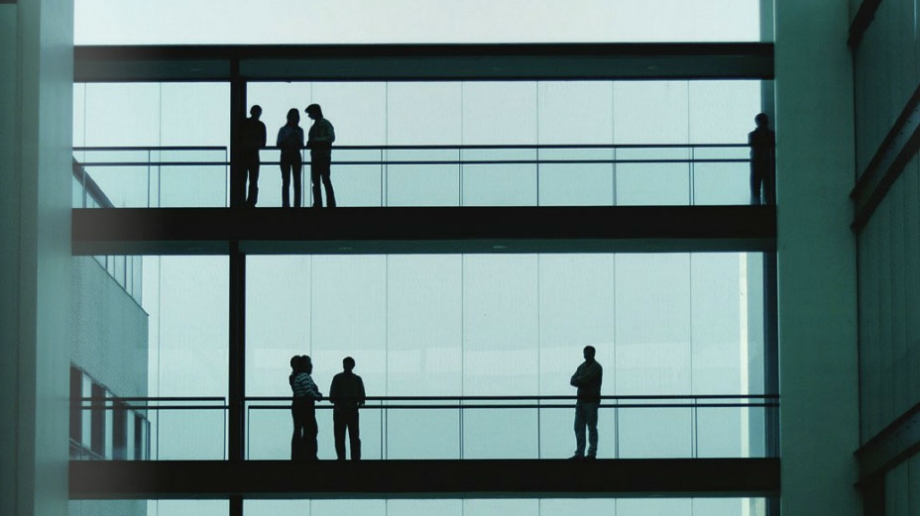Sue Robb of 4Children talks to Julie Laughton and Alison Britton from the Department for Education about the role of childminders in delivering the 30 hours free entitlement.

Applying Design Thinking to facilities management
No longer is design just for architects, constructors and designers within the built environment, now we can all input design into Facilities Management (FM). With the right knowledge, training, tools, Design Thinking - if done with enthusiasm and commitment - can be the main change catalyst for facilities management. The future of the workplace is personal, and Design Thinking can make it personal.
David Kelley, a professor at Stanford University’s School of Engineering, is one of the pioneering Design Thinking gurus who founded IDEO, the award winning international design and consulting company. Kelley’s philosophy is that anyone can think like a designer and apply Design Thinking, not to just design products but also services, processes and even business strategy, starting from the people prospective to what is seen as technologically and commercially practicable.
Design Thinking
Google and Apple are the well known examples of businesses that have used Design Thinking. In the UK, the National Health Service (NHS) has developed a people centric innovation work process using Design Thinking as the enabler.
Design Thinking is now viewed as an innovative business method to solve problems and aid transformation to achieve outstanding results in the business world. Recently the multinational management, consulting firm McKinsey & Company made its first acquisition of a design firm, to accelerate design within the business world. A clear sign that Design Thinking is fast becoming a valuable part of business.
The facilities management industry has moved forward at a frantic pace over the last decade and evolved over time from the traditional building and service activities to become a complex management discipline. Owners, architects, designers, constructors, FM service providers, corporate real estate, in-house FM departments and occupiers can all benefit from Design Thinking. Managing contractors, suppliers, clients, inter-departmental working and various projects and programmes can be complex to control for facilities management professionals and the best results may not be achieved without Design Thinking.
Facilities management companies around the world are now more than ever looking for ways to differentiate themselves from competitors through innovation, technology and new ways of applying facilities management.
Anywhere facilities management has its footprint, Design Thinking can be applied through the whole spectrum from strategic, tactical and onto operational delivery. Facilities management professionals worldwide are involved with soft landings of new constructions, refurbishment projects, alteration of buildings, organisational change and delivery of services, providing ample opportunities to apply Design Thinking and make an impact.
Initiating action
The core component of Design Thinking is not about thinking but more about action, solving a FM issue for the user. The commitment, substantial time and effort of thinking through a problem or work issue then researching and investigating a practicable solution is surprisingly not seen as a critical element of facilities management. When a company has no design thinkers capable of looking at all facilities management angles, it could be a costly and detrimental oversight.
There is confusion between analytical thinking, design thinking, scientific thinking, service design and design process. This can be overcome by simply adopting and embracing elements from all approaches for the betterment of design. The Hasso Plattner Institute of Design, known informally as the d.School at Stanford University has developed a trusted Design Thinking process that consists of five main steps - Empathise, Define, Ideate, Prototype and Test.
The Five Steps
To fully empathise, FM professionals need to observe the current user experience, which can be achieved through interacting and absorbing the whole user experience from start to finish.
Now is the time to define what has been discovered during the empathy process and determine the user standpoint that will be brought forward for FM design.
Take time to probe and research for a selection of viable solutions, exploring beyond your normal FM knowledge boundaries.
Take this opportunity to acquire more knowledge through interaction with the user and streamline the FM design looking for both perfection and scalability.
Time to test the FM design with the aim of understanding the user standpoint on the design, and if required make amendments based on feedback from observations.
There is a vast amount of design thinking tools and training available along with a growing amount of literature on the subject of design thinking which is widely available to support facilities management professionals, some of which is free.
The benefits
There are clear and significant benefits of applying Design Thinking within Facilities Management. Design Thinking allows for differentiation from competitors in the FM marketplace, which ultimately creates value.
Design Thinking can be applied to support innovation, as well as being able to promote communication and collaboration. It is a proven problem solving technique, as it combines critical and creative thinking. Additionally, this can then be applied to strategy development and organisational change, as well as being applied to management, services, and products. Design Thinking is human centered which helps create a great user experience.
Company Focus
Just Lanyards is a subsidiary name of Gifts 2 Impress Limited, who have been trading for over 25 years, we therefore pride ourselves in having endless experience covering all aspects of the promotional merchandise industry.
Event Diary
UKREiiF has quickly become a must-attend in the industry calendar for Government departments and local authorities.
The multi-award-winning UK Construction Week (UKCW), is the UK’s biggest trade event for the built environment that connects the whole supply chain to be the catalyst for growth and positive change in the industry.
Supplier Profiles
Geo Energy
At GeoEnergy Design, we're on a mission to disrupt the traditional way heating and cooling ha
Latest Features
Professor Harith Alani, director of the Knowledge Management Institute at the Open University explains how AI can be used for good and bad.
Alex Lawrence, head of health & social care, techUK sets out techUK’s Five Point Plan for CareTech.












